Wondering if it’s possible to visit the beautiful, jungle-clad volcanoes in New Zealand? Be rest assured that you can! New Zealand occupies the Indo-Australian and Pacific plates causing volcanic activity in the country to be quite frequent.
Read on if you want to find out everything a curious-minded traveller wants to know about volcanoes in New Zealand. We will not disappoint you!
Related Article: Cities and Places to Include in your New Zealand Itinerary
Is New Zealand Volcanic?
Yes, New Zealand is one of the countries that are highly volcanic. The frequency of eruptions is quite high.
Why Does New Zealand Have Volcanoes?
As we’ve already noted, New Zealand lies on the Indo-Australian and Pacific plates. The basic volcano forming theory applies to New Zealand’s volcanoes as well – the Pacific plate pushes against the Indo-Australian plate, which, in turn, pushes down into the Earth’s mantle, a phenomenon called subduction. This causes magma to rise and creates a volcanic arc, a zone with volcanoes.
Types of Volcanoes
Caldera Volcanoes
These large openings of the earth’s crust result from volcanic eruptions. After the eruption, the surface of the magma reservoir collapses, creating a basin-like opening. With time, these basins turn into lakes.
Cone Volcanoes
As the name suggests, a cone volcano has the shape of a cone. The cone-shaped part is formed by the deposits of debris, ash, and lava around the vent; the layers of these substances have been built up over the years, giving it the shape of a cone.
Volcanic Field
A volcanic field has numerous volcanoes. Underneath the field is hot magma waiting to erupt. The Auckland Volcanic Field and the Bay of Islands are two volcanic fields in New Zealand.
Active And Dormant Volcanoes
Active volcanoes have erupted recently, while dormant volcanoes haven’t erupted in the recent past, but they have a chance of future eruptions. In other words, dormant volcanoes can become active at any time.
You might also be interested in: Does it Snow in New Zealand?
Volcanoes In New Zealand
We will now talk about the volcanoes you can visit in New Zealand, where they are located, and things you can do and see.
Mount Ngauruhoe
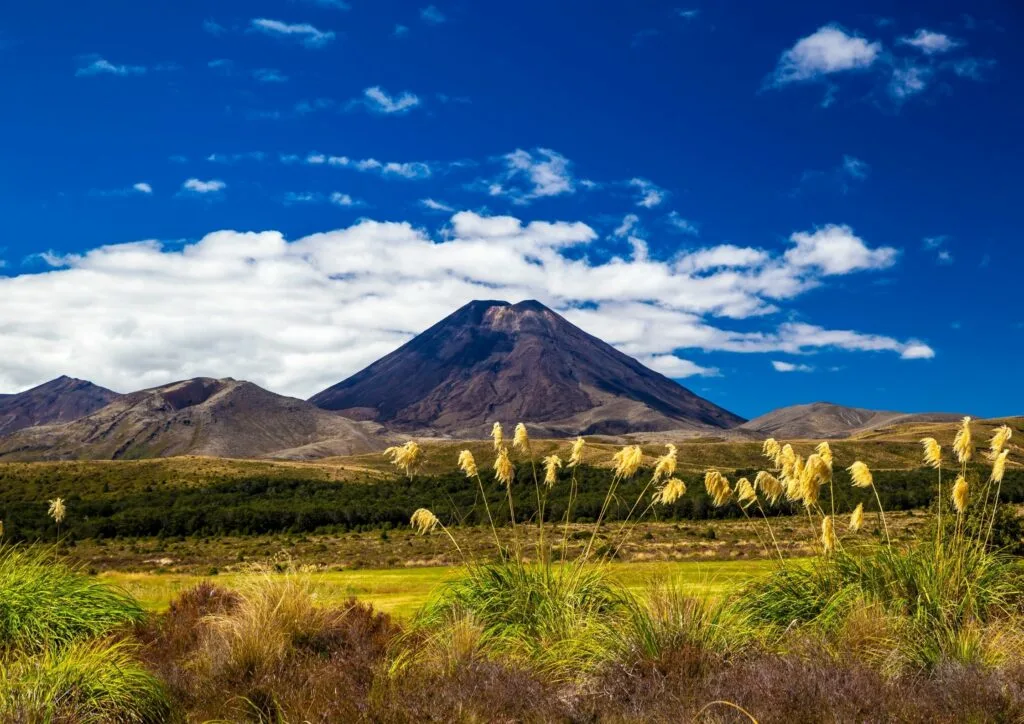
Although Mount Ngauruhoe hasn’t erupted in the last 50 years, it is considered one of the most active volcanoes in the country. During the course of the 20th century, Mount Ngauruhoe erupted a total of 45 times. This has caused the surrounding area to be desolate, scarred, and charred with ash and lava.
You can climb this cone-shaped volcano rising up to 2,291 metres but the area is volatile with shifting slopes and loose rocks; also, the crater still issues a lot of gas and heat. This is not to say that visiting the volcano is not worth it; if you manage to get up to the top, you’ll be treated to the gorgeous panoramas of Mount and Mount Tongariro.
Mount Taranaki
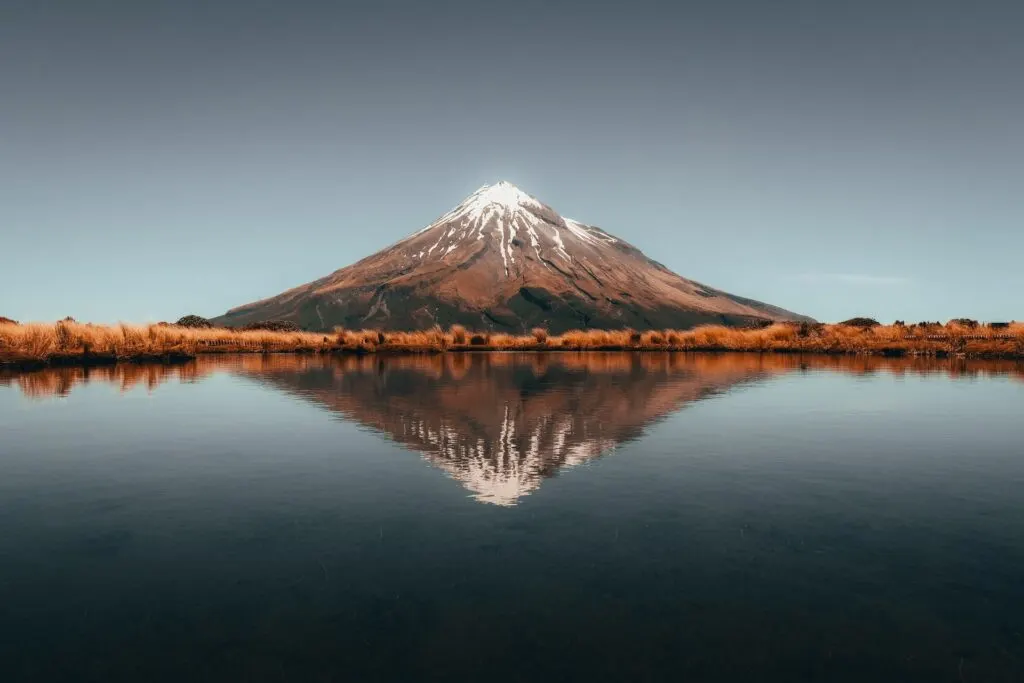
Found on the North Island’s West Coast, Mount Taranaki sits by the Tasman Sea. This cone volcano has a height of 2,518 metres. The volcano is at its best in winter when the peak is covered in snow. Often compared to Mount Fuji, Mount Taranaki has given rise to the verdant vegetation in the area; waterfalls, swamps, rivers, and forests are all part of the ecosystem surrounding the mountain.
Hiking while enjoying the green pastures of Mount Taranaki is one of the best things you can do here.
Mount Ruapehu
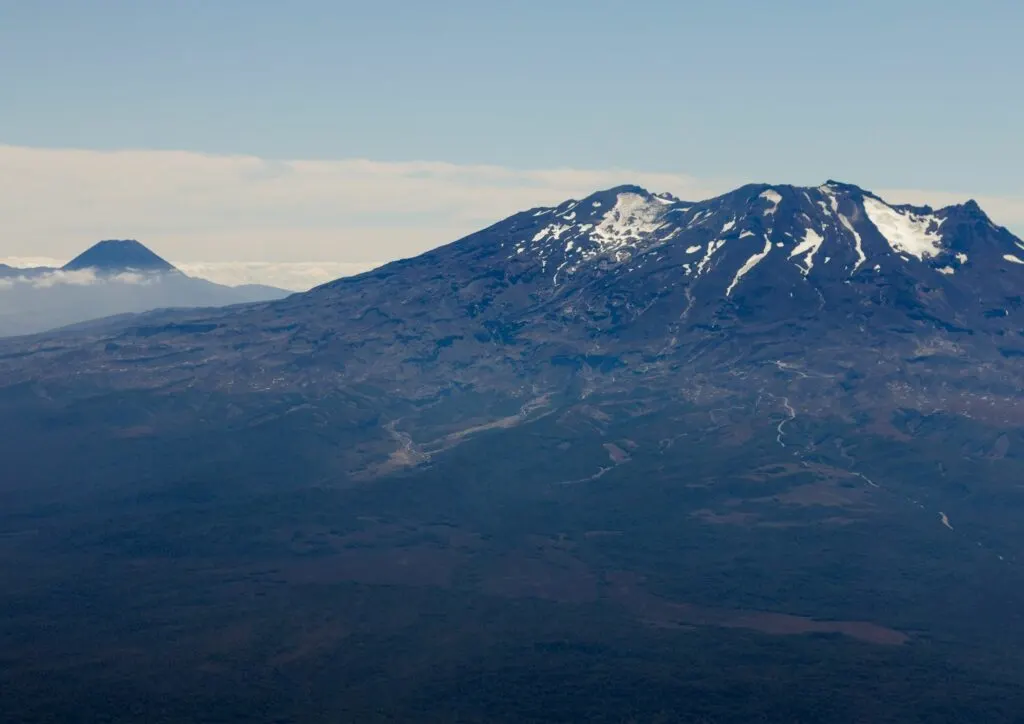
Another large, active volcano in New Zealand, Mount Ruapehu lies in the middle of the Rangipo Desert, with glaciers reflecting the sunlight. This is the largest volcano in the country, and it has three snow-capped peaks; each one of these peaks has a height of around 2,700 metres.
At the top of the mountain is a crate-turned lake that you can check out. Visitors can also delight in the panoramic views stretching over the North Island. Skiing, snowboarding, hiking, and mountaineering are some of the things you can do here.
Mount Tongariro
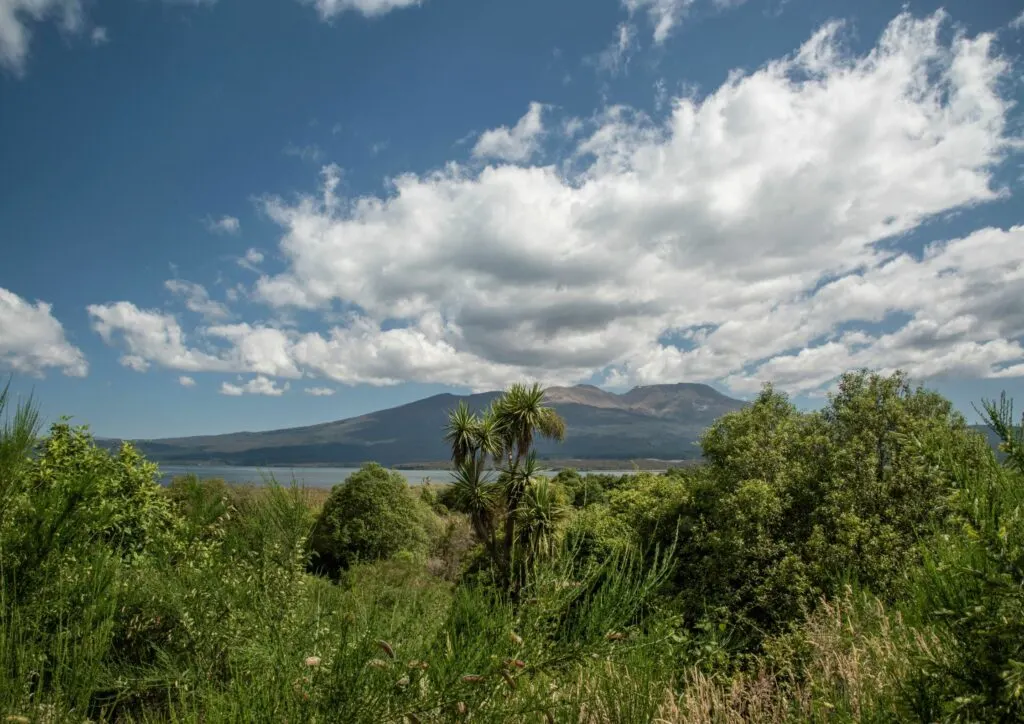
Located right at the heart of North Island, Mount Tongariro has at least 12 cones. Reaching a height of 1,978 metres, the peak is in the midst of jagged rock formations and odd-looking landscapes. Fans of The Lord of the Rings will certainly discover some familiar scenery here. The mount is covered in snow during winter, and the steep ascent is perfect for hiking.
Another highlight of Mount Tongariro are the Emerald Lakes. Once you reach the summit, you will be mesmerised by the stunning views stretching over Mount Ngauruhoe, Mount Ruapehu, and Tongariro National Park.
Mount Tarawera
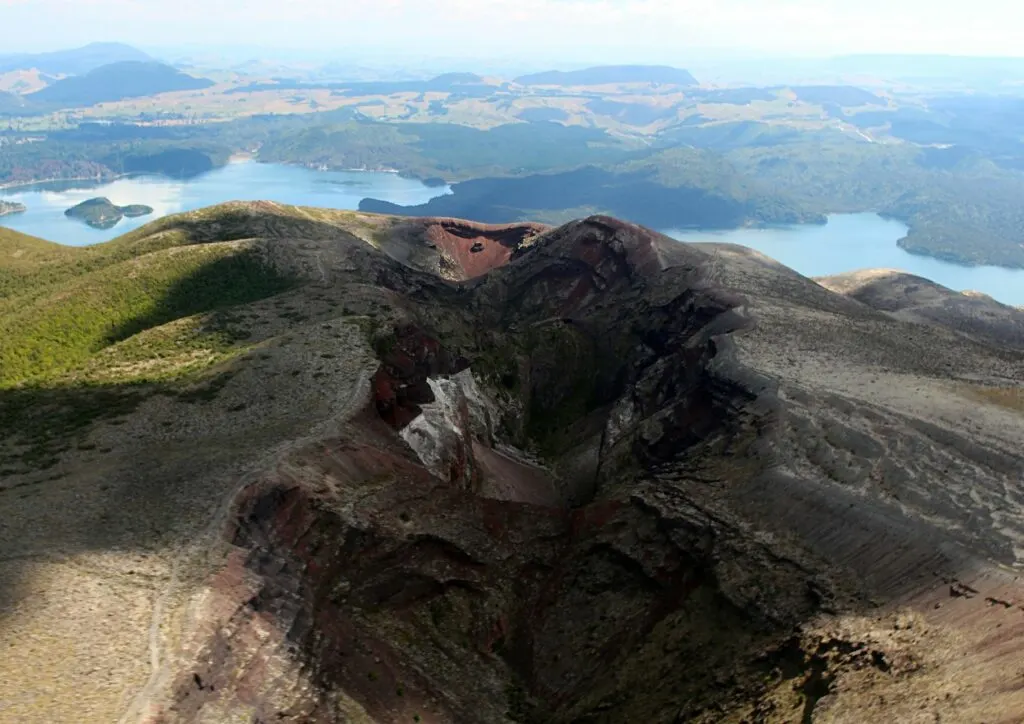
The makeup of jagged cliffs and craters, Mount Tarawera has three main domes; the tallest one has a height of 1,111 metres. The eruption that took place in 1886 drastically changed the landscape of the area, making it replete with fissures and chasms. Explorers find the red soil that contrasts against Lake Tarawera so much to their taste.
Rotorua Caldera
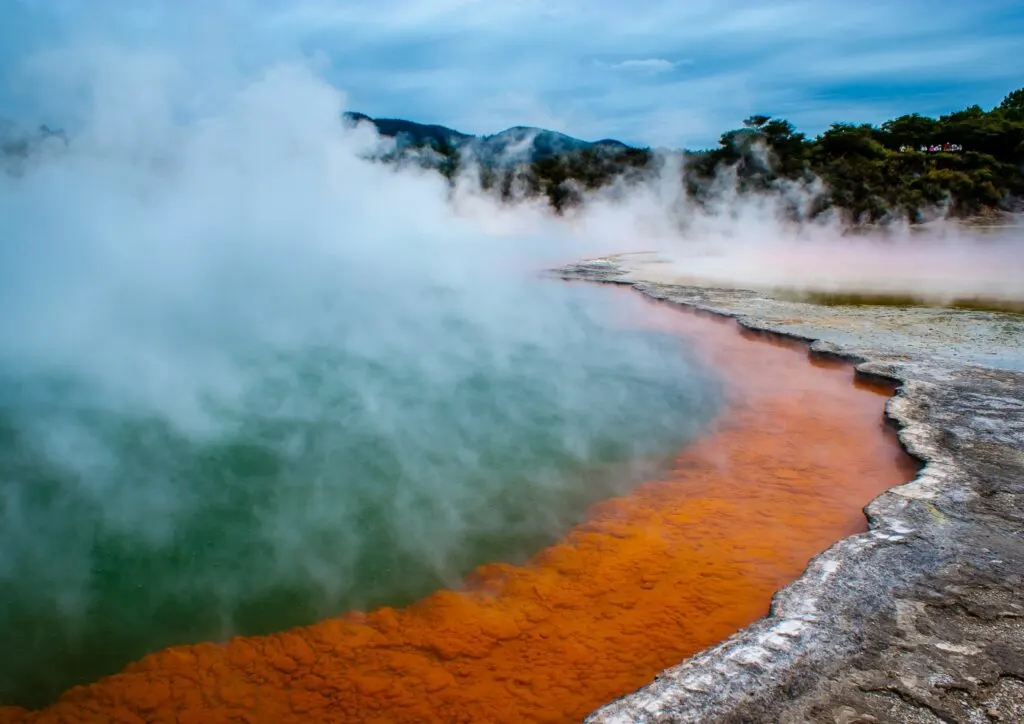
One of the most beautiful places in New Zealand, Rotorua Caldera, is the result of a volcanic eruption that occurred thousands of years ago. This is a caldera volcano, which is now a lake, Lake Rotorua. The lake expands over 16 kilometres, with geysers and hot springs.
Mokoia, found in the centre of the lake, is a lava dome; this is a sacred place that’s given rise to many a legend. Swimming, fishing, and kayaking are a few of the activities you can enjoy at the lake.
Mount Pirongia
The principal highlight of Pirongia Forest Park, Mount Pirongia, rises above all the other attractions in the area. The slopes of the volcano are covered in verdant greenery, and they look spectacular from afar. The thick growth of plants and trees attracts a range of bird species, making it a popular bird-watching spot. The mountain is located on the North Island.
Mount Tauhara
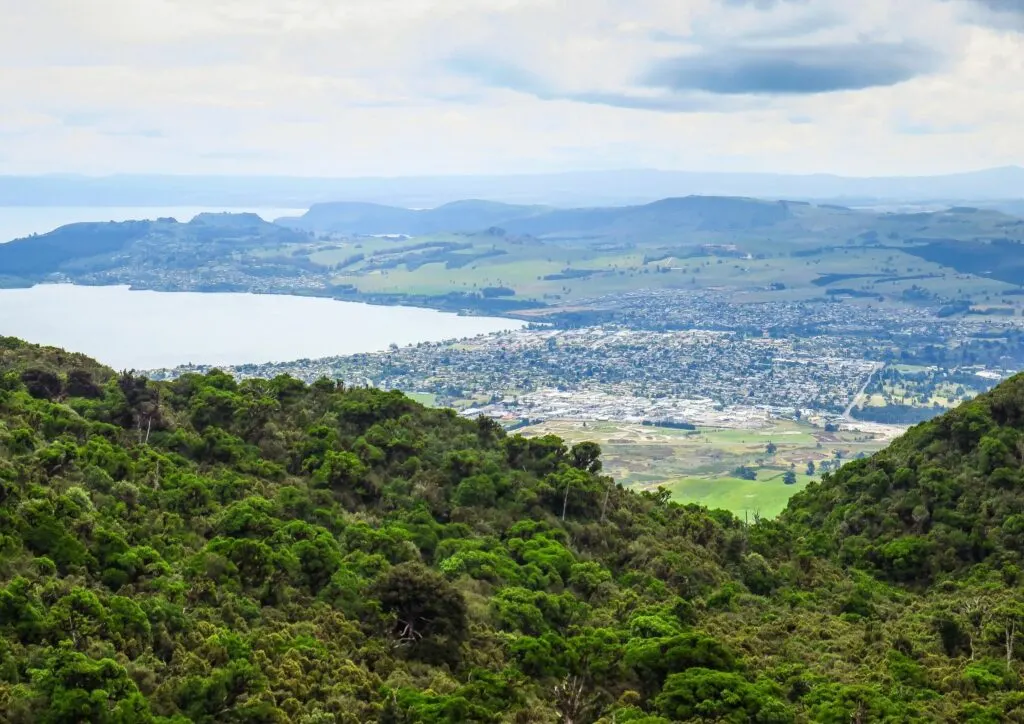
Found at the heart of the North Island, Mount Tauhara, is another volcanic wonder to behold in New Zealand. Overlooking the turquoise waters of Lake Taupo, the peak rises up to 1,087 metres. This has proved to be a difficult hike, but if you do manage to get to the top, you can see the beautiful vistas of Mount Tongariro and Mount Ruapehu.
Like most other volcanic mountains in New Zealand, Mount Tauhara, too, is the source of many legends and local myths. As it is located in an isolated spot, the mountain is often compared to a lonely lover, looking eagerly at Mount Pihanga, its lover. Legends aside, this dormant volcano is now a popular place for hiking, enjoying nature, and sightseeing.
Recommended reading: Are Kangaroos Native to New Zealand?
Frequently Asked Questions About New Zealand Volcanoes
What is the Most Active Volcano in New Zealand?
Whakaari, also known as the White Island, is the most active volcano in the country. Located 48 kilometres offshore from the North Island, the island has a land area of 800 acres. The island is only the tip of a massive submarine volcano. This is the most active cone volcano in New Zealand and has been forming over the past 150,000 years.
The volcano has been continuously releasing gas since James Cook first discovered it in 1769. A series of eruptions were reported during the period from 1975 to 2000, and there were three more eruptions in 2012, 2016, and 2019.
This volcano has a private owner, so you cannot access the island without permission; however, there are authorised tour operators who can take you to the island.
Will Auckland Volcanoes Erupt?
The volcanoes in Auckland aren’t likely to erupt, but the risk is real. The Auckland Volcanic field is still active, even though the probability of eruption is low. At present, there are no signs of a future eruption; however, there’s uncertainty.
If a volcano were to erupt in Auckland, it would cause significant damage, which would last for an extended period of time.
